|
In light of the recent shark attack at Turtle Beach/ Courland Bay, and subsequent sightings in the Grafton area, the Buccoo Reef Marine Park (BRMP) authorities on the island have taken the decision to temporarily close the marine park until further notice.
A release Tobago’s Division of Food Security, Natural Resources and the Environment has noted that the closure is effective immediately and applies to all recreational activities including snorkeling, diving, glass-bottom boat tours, and any other water-based activities within the park boundaries. The division noted that the decision to close the park has been made out of an abundance of caution and to ensure the safety of all visitors and staff. It also noted that the temporary closure will allow emergency responders including the Coast Guard to conduct a thorough assessment of the park and neutralise the shark threat if possible. It said: “We understand that this closure may cause an inconvenience to our visitors and tour operators. However, the safety of our patrons and the protection of our marine ecosystem are our top priorities.” The division said in addition, they’re working closely with the local authorities and experts to monitor the situation and will provide timely updates as more information becomes available, and as soon as it is deemed safe to reopen the park. It further advised all beachgoers to exercise extreme caution where necessary. (Source: The Loop, April 26, 2024)
0 Comments
Originally published on Sunday, February 24, 2013
Do you remember the time when small one door village parlours that once dotted our rural landscapes? Today the terminology "parlour" is still in use mostly in the countryside, but why the name " PARLOUR"and not village shop? In the following blog Angelo takes us to a journey back in time to the emergence of these tiny make shift one door shops and how they became known as parlours. _______________________________________________________________________ James Cummings, in his seminal work on The Barrack-Yard Dwellers, said, “For the people of the barrack-yards, the sun just had to rise tomorrow.” By this he meant that decades of economic penury in the post-emancipation urban space, leading up to the massive slum clearance exercises of the 1950s, had made the dwellers of the poorer parts of Port-of-Spain masters of coping with poverty. In the areas of Queen Street, Charlotte and Quarry Street where the barrack-yards proliferated, there were occasional wooden cottages owned by more “respectable” coloured people, Venezuelan refugees fleeing political unrest, and white people of reduced means. Many of them would be on the verge of not knowing where tomorrow’s bread would come from. One coping strategy was to open a small “one-door” shop in the front premises of one’s house. This could be in the porch or as a wooden extension. During colonial era a small room inside the main dwelling house was commonly referred to as a parlour. This was a room to entertaim guests, read the daily news , have a smoke or a "spot of tea" Since these makeshift shops often occupied the aforementioned spaces attached to main dwelling structure, the enterprises themselves became known as parlours. Few, if any, Trinidadians are aware that this was how these vital community establishments came to be called thus. The parlour, in urban and rural areas, became a focal point of social interaction where people, young and old, could meet and exchange the latest gossip. Parlours of yore were places where the fare was manufactured almost entirely by local hands and where simple treats meant so much. They were tenuous businesses where tiny profit margins made their proprietorship more a community service than a get-rich-quick enterprise. For children of yesteryear, there could be few pleasanter places. Large glass jars would be filled with sugar-coated paradise plums, kaisa balls, tangy tamarind balls, molasses-dripping toolum, pink sugar cake and paw-paw balls. A huge block of ice, delivered by a cart in the early morning, would be resting on a piece of sacking, swaddled in straw to keep it from melting too quickly. This ice, of course, would be vigorously shaved, rammed into a metal cup and then covered in sweet, red syrup for a penny, and for another copper, laced with condensed milk to result in that much-relished treat, snowball. Outside of the city and in the countryside, there were parlours too, mostly run by “celestials with pig-tails and thick-soled shoes grinning behind cedar counters, among stores of Bryant’s safety matches, Huntley and Palmer’s biscuits, and Allsopp’s pale ale...” this according to Charles Kingsley, writing in 1870 about a Chinese parlour in the deep countryside. The countryside parlour often was the oasis of rural travelers, according to one account from 1914: “Restaurants are rare in the West Indies, except in the principal towns, but it is generally possible to obtain something of a simple kind, which on this occasion consisted of that nice aerated drink called kola, together with buns from a stall at the entrance of the same shop.” Photo 1 is a 1908 photo of a parlour in east Port-of-Spain , where the business model developed. In addition to jars of pickles and sweets, this little wayside emporium also sells a variety of fruit and vegetables. These one door parlours can still be found in many local communities as I discovered on one of my heritage trips to Tobago. ( See photos 2-4 ). (Source: Virtual Museum of Trinidad and Tobago, April 16, 2024) Who was Mary Bartlett alias Ma "Mayute"? Siparia and La Divina Pastora are synonymous, and the very identity of the little town is associated with the presence of its patron saint. The Elders in Siparia would also remember the name Ma Mayute who was a wealthy parishioner who was custodian of all the wealth of the Siparia Catholic Church. Data from historical records speaks of the powerful influence of Mary Bartlett alias Ma "Mayute", in encouraging the workship of La Divina Pastora by persons of East Indian Descent . In fact Mary Bartlett, alias Ma Mayute, dominated the affairs of Siparia and the local parish for many decades until her death in the 1960s at more than 100 years of age. Her large , ornate home, stood on Mary St. and was constructed in the 1870s. It was demolished in 2000. Photo of Ma Mayute's mansion . (Source: Virtual Museum of Trinidad and Tobago, April 6, 2024) Doubles cast members David Fraser (Doug), left, Rashaana Cumberbatch (Anita), Leela Sitahal (Sumintra), Errol Sitahal (Ragbir), and director Ian Harnarine attend opening night of the Canadian Film Fest in Toronto, Canada. - Photo courtesy Brian de Rivera Simon TT-CANADIAN feature film Doubles has won three awards at the Canadian Film Fest, including a Best Supporting Actor award for veteran TT-born actor Errol Sitahal. The awards were announced at the festival held last month in Toronto.
Sitahal spoke with Newsday about his win during a WhatsApp audio call and said he was excited by the news. “It is a reputable institution, the Canadian Film Fest, and to get an award from them is pretty much an honour. It means to me I am regarded by the film fraternity as a top actor in the country. Pity I am not regarded the same way in Trinidad, but still.” A long-time veteran of the stage and screen, Sitahal has appeared in several local theatre productions, Caribbean films, Hollywood films including, The Little Princess, Tommy Boy and Harold & Kumar Go to White Castle, and Canadian television series 11 Cameras and How to Be Indie. In Doubles, Sitahal plays Ragbir, a Trinidadian immigrant living in Toronto who is visited by his son Dhani (played by local actor and attorney Sanjiv Boodhu), a frustrated Trini doubles vendor who comes to Canada seeking financial gain from his estranged father. The trip becomes complicated when he learns that his father has a serious illness. Both Boodhu and Sitahal reprised their roles from Ian Harnarine’s 2011 short Doubles With Slight Pepper which the new film is based on, and which won many accolades including the Best Canadian Short Film at the Toronto International Film Festival and also a Genie Award. In the new film Sitahal’s real-life wife Leela plays his estranged wife Sumintra. On his award-winning role, he said it was possible in the past he had roles equal to what he played in Doubles but they were not given any kind of attention including in Trinidad. “I could have gotten (a similar award) a long time ago. But it was a proper part a nice part, and I related to it easily. It was a relaxed and comfortable performance.” Sitahal said his role would have been special to the Canadian Film Fest as it was not the usual character seen in films, including those from Trinidad and the wider Caribbean. “The area that is gradually being explored is the existence of diaspora. It is a very confusing area. People talk about multiculturalism, talk glibly about it. It is very confusing, very painful, and full of suffering and deep-down disturbances. People moved from one culture to another, specifically to (Canada).” He said there are a lot of culturally displaced people in Canada, and it was important to recognize and engage differences without losing cultural distinctiveness. He added there are similar differences within Caribbean societies and, though there has been a longer time to engage with them, these issues were not being worked out. Sitahal expressed hope his role and the award will lead to more films and discussions about the displaced immigrant experience and the disturbances they suffer. “I think cinema is a place to articulate these differences.” Doubles writer and director Ian Harnarine spoke to Newsday about Sitahal’s win in a Zoom interview and said he was very happy that he was being recognized with this special jury award. “Everyone who sees this film is immediately moved by Errol’s performance. And I knew when we were filming it, we were getting something very special out of the actors but especially Errol.” Harnarine said he worked with Sitahal on two films and described the level of his talent as “unmatched.” “The Trinidadian audience would know Errol Sitahal as the phenomenal actor who has been doing countless stage plays and movies in Trinidad, but I don’t think he’s received the recognition formally that he deserves. I believe he’s a national treasure. And I’m glad he’s getting the recognition for the amount of talent that he has and how much he puts into it.” He said the team was pleased with the recognition that the awards represented. Together with the award for Sitahal, Doubles also won the Reel Canadian Indie Award and People’s Pick for Best Flick. Harnarine explained the Indie Award was a jury award and goes to the movie that encapsulates the spirit of independent film. “It’s not a big studio movie. What we didn’t have in money in terms of budget, we made up for it in terms of heart and in terms of grit and of people really working hard to make the movie. And so, to be recognized for that, it means a lot.” On the People’s Pick award, Harnarine said this award is voted on by the audience. He recalled Doubles had a soldout audience in Toronto which was a dream come true for him. “The audience really loved the movie. There were people who were crying throughout their experience and that meant a lot. So you’re connecting with the audience, which is what we’re trying to do ultimately with the film. Trying to move people emotionally.” Harnarine, a Canadian filmmaker born to Trinidadian parents, recalled the audience in Toronto included many people from Trinidad and the Caribbean diaspora but also “regular Canadian people” from Ontario’s capital city. “Toronto is a really multicultural place. So, to tap into that audience, there’s something in there that they would know. Even if they didn’t know about doubles or anything like that, by the end of the movie they felt something about this universal truth that I think the movie is trying to get at. And if they felt something by that, then I feel that we’ve done our job.” He said he was hoping everyone could appreciate the film whether they were aware of the culture presented in the film or not. “I’m hoping they can tap into the humanity that is involved.” He said the film was shot during very cold conditions and they were always pressed for time and money. “But the one thing that always kept me going was that we would screen this film for our people. We’d screen this movie in Toronto. We’d screen this movie for a packed house.” He said that having this dream come to fruition made for a very special night. The three awards are Harnarine’s first at the annual festival held by the Canadian Film Fest, which is a non-profit organization whose mission is to celebrate the art of cinematic storytelling by exclusively showcasing Canadian films. Harnarine explained the Canadian Film Fest was an early step in their film festival run and the awards immediately raised the stature of the film. “We can say we’re a multiaward- winning film now with an award-winning performance by a standout actor. And hopefully, that will raise awareness for the film and get more people interested in it.” Harnarine said he was looking forward to having a run in Trinidad after the film successfully opened the TT Film Festival 2023 back in September. “I am hoping we can work with FILMCO to get a theatrical release of the film in Trinidad. And that would mean a lot to me. And I’m hoping the local audience would come out and support what I think is a really high-quality vision of themselves.” On his other projects, Harnarine announced he was adapting the 2007 historical fiction novel Soucouyant by David Chariandy, a Canadian writer born to Trinidadian immigrant parents. (Source; Newsday, April 2, 2024) 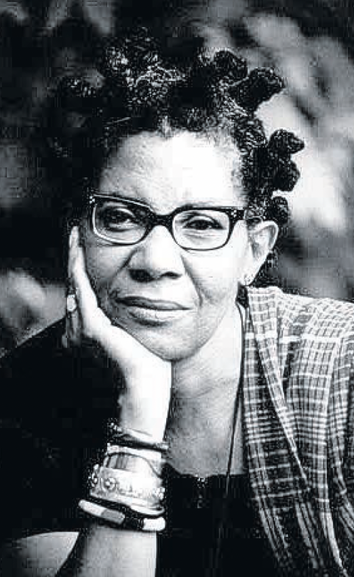 Tobago-born poet, playwright, essayist, and novelist M NourbeSe Philip was among eight writers awarded US$175,000 each by the Windham-Campbell Prizes to support their work and allow them to focus on their creative practice independent of financial concerns. A media release said the Windham-Campbell Prizes are a major global prize that recognizes eight writers each year for literary achievement across four categories – fiction, nonfiction, poetry, and drama. With annual prize money exceeding US$1.4 million – and total prize money awarded over the past decade at over US$18 million – they are one of the most significant prizes in the world. In poetry, Philip was selected for her diverse and rich body of work – including "Zong! As Told to the Author by Setaey Adamu Boateng" – which is deeply engaged with the complexities of art, colonialism, identity, race, and forgotten and suppressed histories, and that constantly pushes boundaries on the page and in performance, the release said. The selection committee gave her this citation: “Inventing derelict tongues of refusal, M. NourbeSe Philip breaks open and reimagines the horror of official speech and how it acts, creating a genre-obliterating poetry.” Previous writers from TT who have been awarded a Windham-Campbell Prize include Dionne Brand (fiction, 2021) and André Alexis (fiction, 2017). Michael Kelleher, director of the prizes, said: “Each year, I feel incredibly honored to call the eight recipients: to be the messenger delivering the entirely unexpected and life-changing news that they have been awarded US$175,000. It is clear – now, more than ever – how challenging working in the creative industries, around the world, can be. A Windham Campbell Prize is intended to offer financial security, and through this freedom, the time and space to write, to think, to create – all without pressure or expectation.” The prizes were the brainchild of lifelong partners Donald Windham and Sandy M. Campbell. The couple were deeply involved in literary circles, and for years they had discussed the idea of creating an award to highlight literary achievement and provide writers with the opportunity to focus on their work independent of financial concerns. When Campbell died unexpectedly in 1988, Windham took on the responsibility for making this shared dream a reality. The first prizes were announced in 2013. The prizes are administered by Yale University’s Beinecke Rare Book & Manuscript Library, and nominees are considered by judges who remain anonymous before and after the prize announcement. Recipients write in English and may live in any part of the world. 2024 recipients:
Pan American Track Cycling Championships 2024 men's keirin gold medallist Nicholas Paul, centre, is flanked by silver medallist and reigning keirin world champion Kevin Quintero, left, and bronze medallist Kwesi Browne. Photo courtesy TT Cycling Federation. ACE Trinidad and Tobago cyclist Nicholas Paul earned his country's first gold medal at the 2024 Pan American Track Cycling Championships at the Velo Sports Centre in Los Angeles, California on April 4, competing in the men's keirin event.
On April 3, Trinidad and Tobago got their first medal of the games when endurance rider Akil Campbell grabbed bronze medal in the men's scratch final. Campbell's compatriots added to Trinidad and Tobago's medal tally on the following day of competition as Paul topped the six-man keirin field, with fellow TT cyclist Kwesi Browne notching third spot to secure his team's third medal at the games. Paul took a tactical approach as he started from the back of the pack, before using his world-record sprint speed to power past the field to claim gold. Colombian and reigning world keirin champ Kevin Quintero took the silver medal, while his countryman David Ortega was just pipped to a podium finish by Browne. In the women's elimination race final on April 4, TT's Alexi Ramirez finished eighth, with USA's Jennifer Valente taking the gold medal. Colombia's Juliana Londono and Mexico's Yareli Acevedo placed second and third respectively. In the women's sprint event, 2023 Commonwealth Youth Games medallist Makaira Wallace advanced to the 1/8 finals and ended the competition in 13th place, while Phoebe Sandy narrowly missed out on a spot in the 1/8 finals and finished 17th overall. In the early session on April 5, Tariq Woods will take to the track in men's pursuit qualifying, Ramirez will contest the women's scratch omnium and the trio of Browne, Paul and Quincy will face the starter in men's sprint qualifying. (Source: Newsday, April 5, 2024) - Author : Angelo Bissessarsingh There are good men and there are great men. Unfortunately, these are often the first to be cast aside, they whose memories and the works with which they benefitted humanity. In his long and prosperous lifetime, Harry Bourne Darling of Lothians Estate near Princes Town did more for the colony than many since. Born in Dublin Ireland around 1813, little is known of Darling’s origins save that by 1840 he was working at Les Efforts Estate, near San Fernando. Darling saved and was able to acquire the extensive Lothians estate near the old Spanish Mission of Savanna Grande, an area known for its pastoral beauty and rolling hills.Following the example of Eccles, Darling opened at his own expense, a school for the Indian children of his estate, breaking with the norm of other estate owners in putting the children to work in the weeding gangs of the estate. This was a full five years or so before the arrival of Rev. John Morton in 1868 and the commencement of the Presbyterian Canadian Mission to the Indians (CMI). Darling, through the Anglican church , sent to India a catechist who could teach and relate to the Indians. The school was described thus in 1864: “Whilst this good work was going on in the North of the Island, in the South Mr. Darling was working in the same direction by the maintenance on his Estate of an Indian School for Coolie Children, to which he has recently added a Catechist from India for the instruction of the adults. Most affecting is it to hear the little Hindoo children, whose ordinary language is still that of their native land, rehearse distinctly their little hymns in English, with verses from the Holy Scripture, or answer simple questions in Bible History, or on Christian truth, or repeat in their own language the Christian Creed and the prayer of our Lord. The Lothians School has 24 schoolars of whom 21 are Hindoo.” Such were the good works of Darling, that he was known as the ‘Squire’ of Savanna Grande, being a man famous for his deep sense of charity, humanity and goodwill. This was the exception rather than the norm among the Naparima sugar planters and really made him a legend in his own time. His home and its grounds were an example of tropic elegance and entertained many a distinguished guest. In 1869, the English writer, Charles Kingsley and his friend, Governor Sir Arthur Gordon visited Savana Grande via the Cipero Tramroad and overnighted with Darling. Kingsley was immediately taken with his gracious host and his magnificent abode and wrote flatteringly of him. In a time when harsh managers, owners and overseers dominated, Darling was a gentleman and father to all. Usually when devastating fires swept the pre-harvest canefields of the Naparimas, the estates which suffered the most were those with brutal management …..labourers would make half-hearted attempts to save the crop or none at all, caring nought if the estate went bankrupt, one master being as bad as another . Not a few of these fires were maliciously set to ruin hard-hearted managers. Darling’s kindness was well repaid when in 1868 forest fires raged on Lothians Estate all hands were on deck in a valiant but futile attempt at saving what the master had taken so long to build. Kingsley recounts the story thus: “And only the summer before all had been well-nigh swept away again. During the great drought the fire had raged about the woods. Estate after estate around had been reduced to ashes. And one day our host's turn came. The fire burst out of the woods at three different points. All worked with a will to stop it by cutting traces. But the wind was wild ; burning masses from the tree-tops were hurled far among the canes, and all was lost. The canes burnt like shavings, exploding with a perpetual crackle at each joint. In a few hours the whole estate, works, Coolie barracks, Negro huts, was black ash ; and the house only, by extreme exertion, saved. But the ground had scarcely cooled when replanting and rebuilding commenced; and now the canes were from ten to twelve feet high, the works nearly ready for the coming croptime, and no sign of the fire was left, save a few leaflesstrees, which we found, on riding up to them, to be charred at the base. And yet men say that the Englishman loses his energy in a tropic climate.” Rebuild they did, and when Kingsley and Governor Gordon sojourned with Darling, they had another touching example of the Squire’s paternal affection which is described as follows: “We had a charming Sunday there, amid charming society, down even to the dogs and cats ; and not the least charming object among many was little Franky, the Coolie butler's child, who ran in and out with the dogs, gay in his little cotton shirt, and melon-shaped cap, and silver bracelets, and climbed on the Squire's knee, and nestled in his bosom, and played with his seals ; and looked up trustingly into our faces with great soft eyes, like a little brown guazu-pita fawn out of the forest. A happy child, and in a happy place” The following day, Kinglsey and Governor Gordon rode into the village and met with the masses. Darling was also a benefactor of the Canadian Mission to the Indians , giving to Rev. John Morton, both lands and money for the establishment of a manse, chapel and school at Savana Grande, which is now known as St. Andrew’s Presbyterian Church. In 1880, Darling hosted royalty, and that of the finest, when the two grandsons of Queen Victoria , Princes Albert and George (later King George V) visited Trinidad as midshipmen aboard the HMS Bacchante. The Princes travelled to Savanna Grande via the Cipero Tramroad, where they were waylaid by the rector of St. Stephen’s Anglican Church, the Rev. J.G Knight, who begged Their Majesties to indulge him and an adoring crowd by planting two small poui trees near the chapel- still to be seen today- , which the Princes were happy to do. The name of the village was changed to Princes Town. They then proceeded to the mud volcanoes of the Devil’s Woodyard on Hindustan Estate, stopping on the return journey to be entertained by ‘Squire’ Darling. Even though a very old man, Harry Darling’s charity and hospitality never dimmed and in 1892, he hosted a wife of a Canadian Presbyterian missionary who wrote: “As kind friends had invited us to visit their Cacao estate near the Montserrat Hills, we returned to Princestown by the Cipero tramway, which took us through eight miles of sugar estates. Rev. Mr. Macrae was on hand to meet us. Thanks to the kind hearted Mr. H. B. Darling, who made a gift to our Mission, of a large part of his beautifully situated property for the "Manse", and the adjoining buildings and grounds. Though an Episcopalian he has ever shown the deepest interest in our Missionaries. We feel very grateful to Mr. Darling and the Doctor for their kindness to us, and we will not forget the many enjoyable drives, in the large comfortable ' Victoria", and the exquisitely arranged flowers he sent in to us during our stay” H.B Darling, full of years and good works, died in 1897 aged 84, being given a long existence which he used to great purpose. A huge crowd gathered at Lothians House where his remains were sorrowfully conveyed to the St. Stephen’s Anglican church , being laid to rest under a simple marble marker. Lothians Estate passed into the holdings of the Colonial Company , the owners of Usine Ste. Madeline and the largest sugar concern in the British Empire. The home which was sanctuary and salon to prince and pauper was demolished in the 1930s. Darling’s gravestone, in the unkempt St. Stephen’s churchyard, fell into dereliction and was lost for decades , before being restored by Clark and Battoo’s Funeral Home in the 1980s in a rare example of public preservation, worthy of the memory of a man who did so much and is now forgotten. The gravestone reads: “IN LOVING MEMORY OF HARRY BOURNE DARLING, FORMERLY OF THE LOTHIANS ESTATE . HE WAS BORN IN DUBLIN AND DIED AT PRINCES TOWN ON 9TH DEC. 1897 AT AN ADVANCED AGE. By grace ye are saved through faith and that not of yourselves , it is the gift of God . Eph. II .8” (Source: Angelo Bissessarsingh Virtual Museum of T&T, Feb 1, 2024) Congratulations to Ms. Doolarie Ramdath, cocoa farmer of Rio Claro! She is one of three local cocoa farmers who have achieved international recognition for their beans this year.
At the 2023 Cacao of Excellence Awards, Trinidad and Tobago proudly claimed 3 Silver Awards in the category of Central America and the Caribbean. Ms. Doolarie Ramdath was one of these recipients. The ceremony took place at the historic Beurs Van Berlage in the heart of the Amsterdam at the Chocoa Trade Fair, during the Amsterdam Cocoa and Chocolate week, on February 8th, 2024. Ms. Mala Partap of the Cocoa Development Company of Trinidad and Tobago Limited accepted the award on her behalf. Cacao of Excellence recognizes quality, flavour and diversity of cocoa beans from origins around the world, to improve farmers’ livelihoods and drive sustainability of the cocoa supply chain, since 2009. Here is the Cacao of Excellence’s flavour profile description for the chocolate made by Doolarie’s beans- “This smooth chocolate opens with moderate acidity over a solid cacao base, hints of fresh grapefruit, tropical, and yellow fruits. It transitions to deeper raisins and dried apricots, mild wood, and vegetal notes. Subtle hints of tobacco emerge, and astringency builds up in the finish supporting the lingering cacao aftertaste.” We wish her more cocoa successes in the future! (Source: Cocoa Development Company TT, March 13, 2024) |
T&T news blogThe intent of this blog is to bring some news from home and other fun items. If you enjoy what you read, please leave us a comment.. Archives
July 2025
Categories
All
|

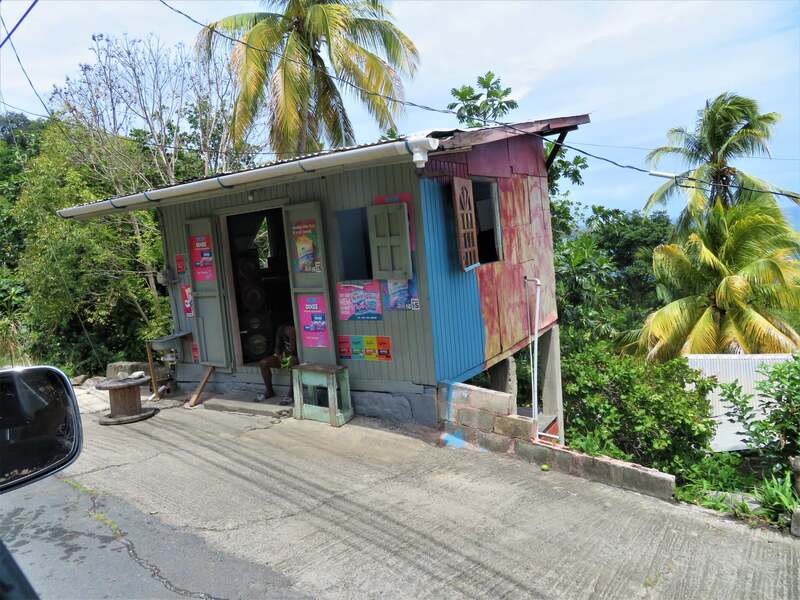
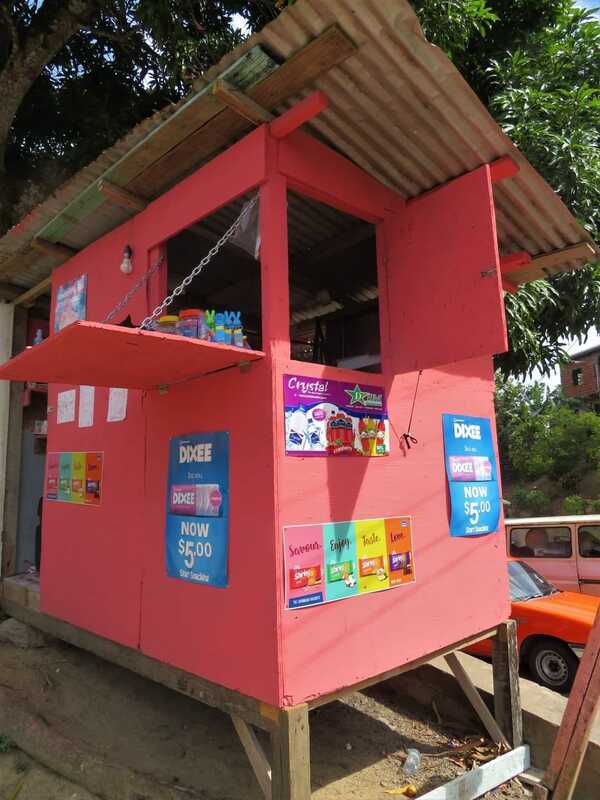
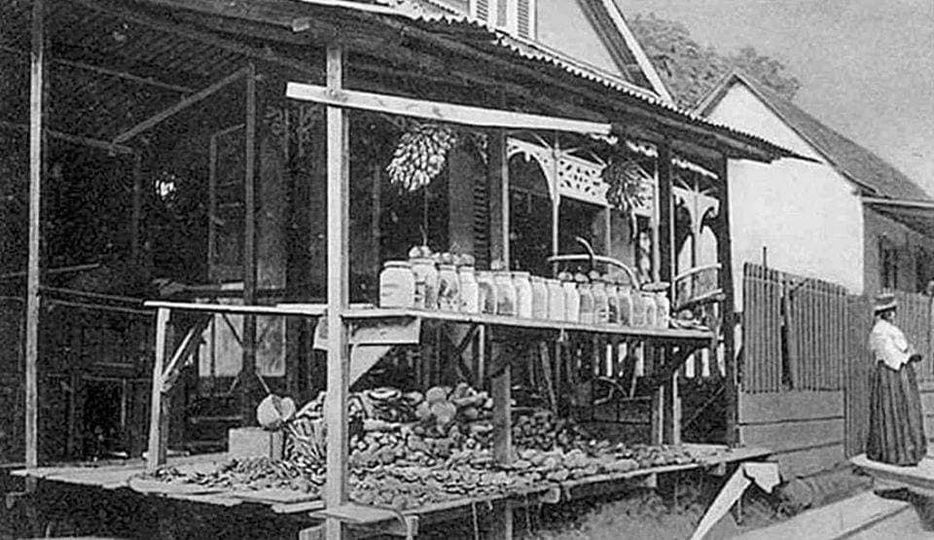
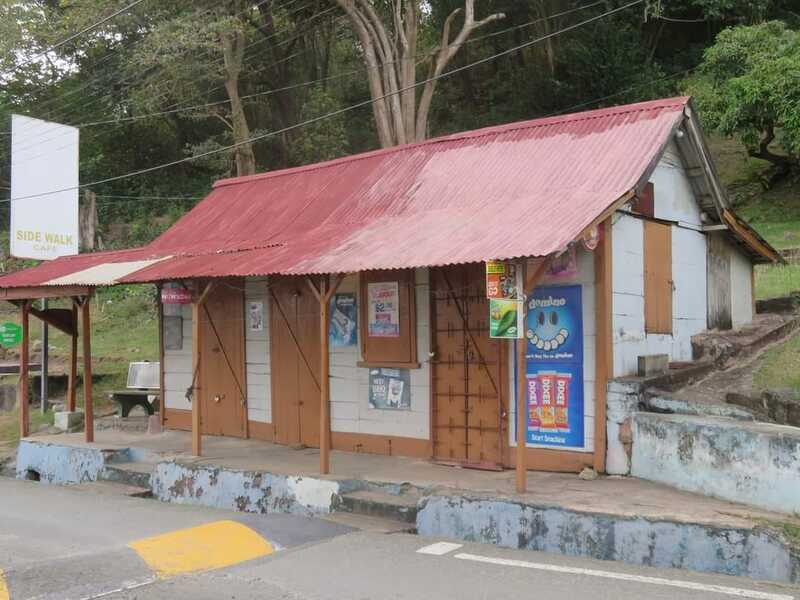
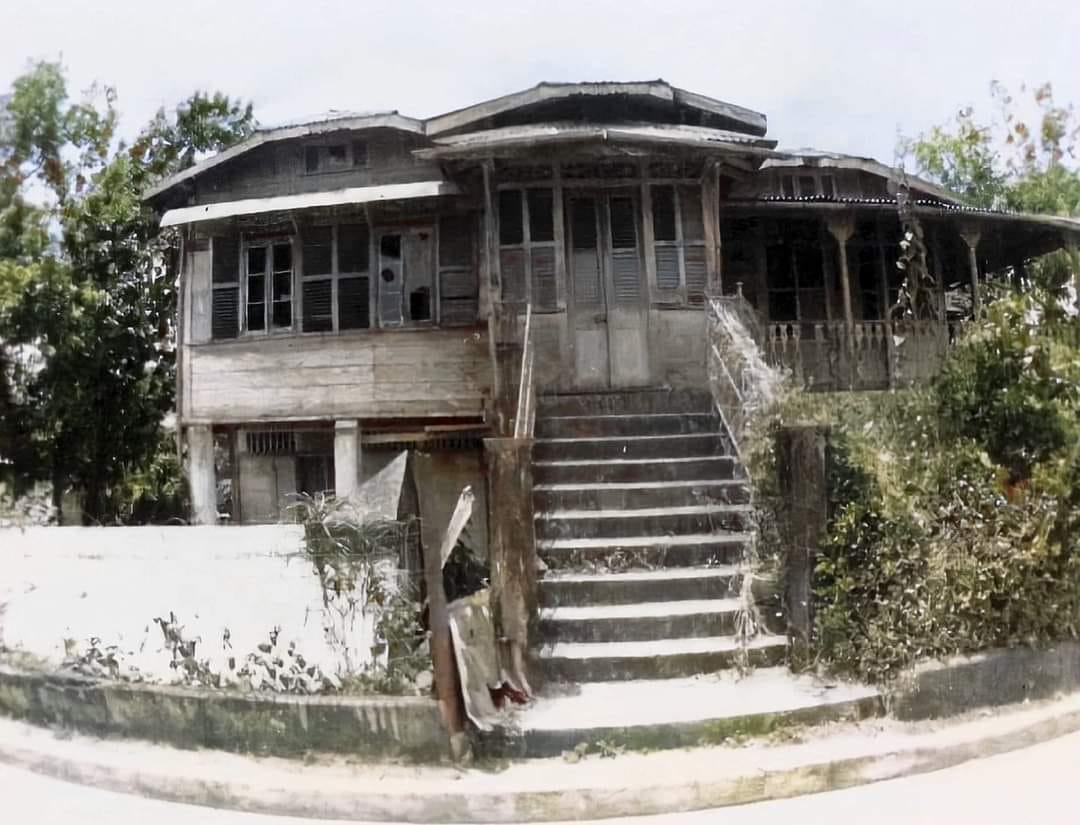


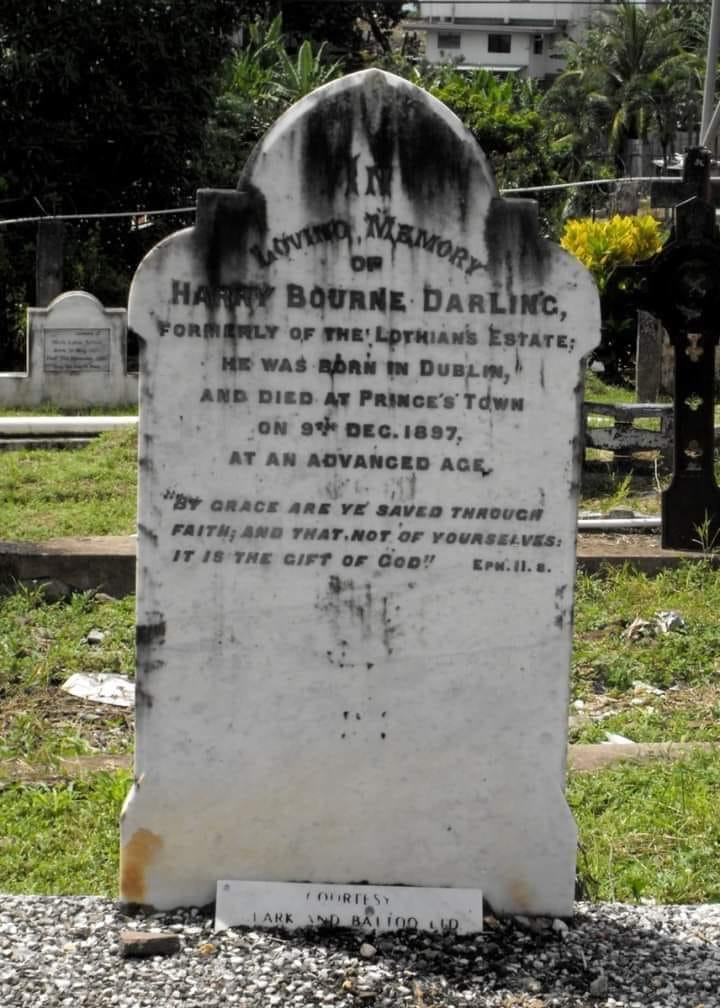

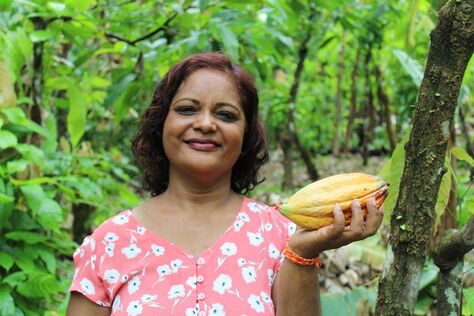

 RSS Feed
RSS Feed